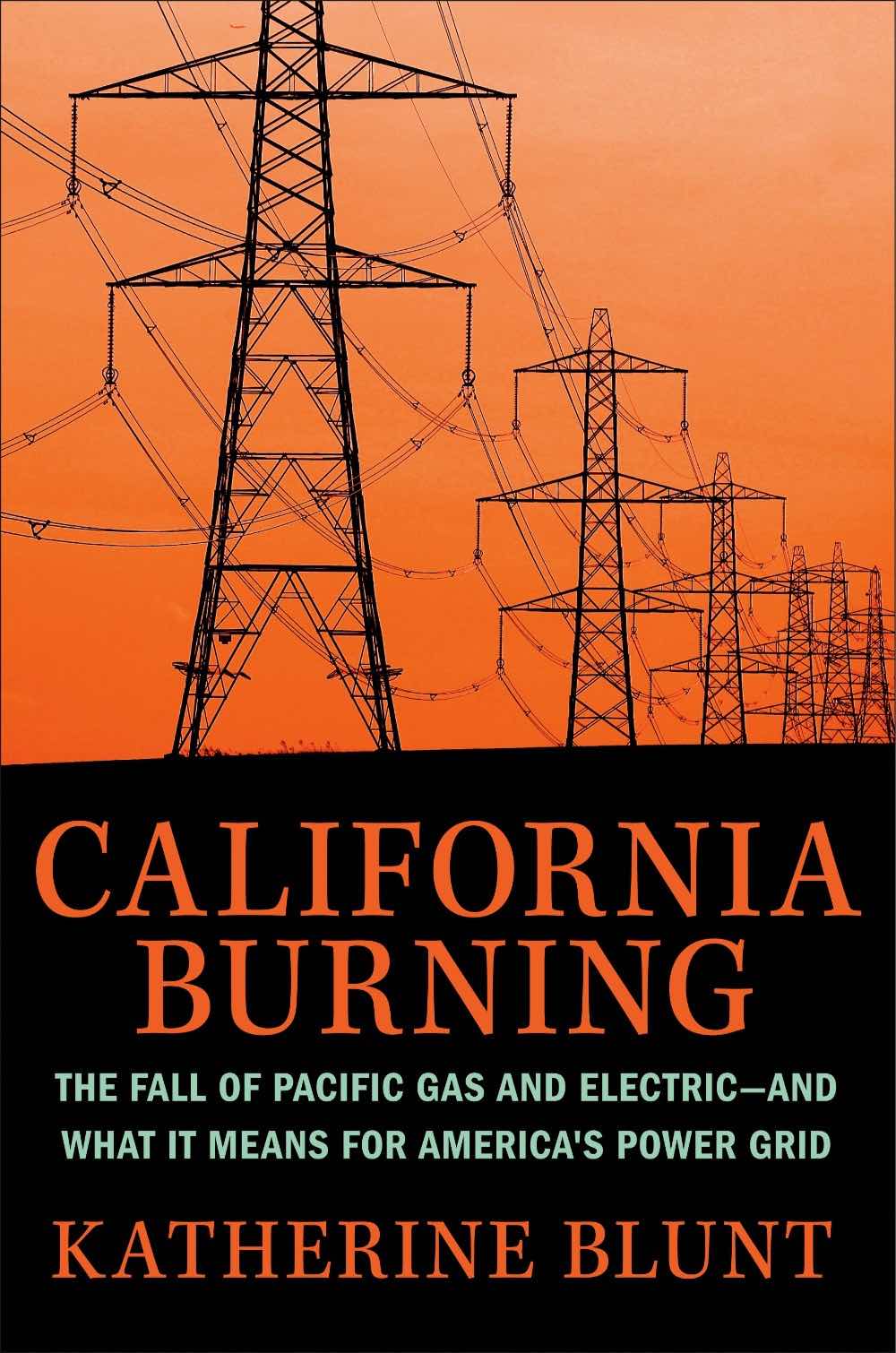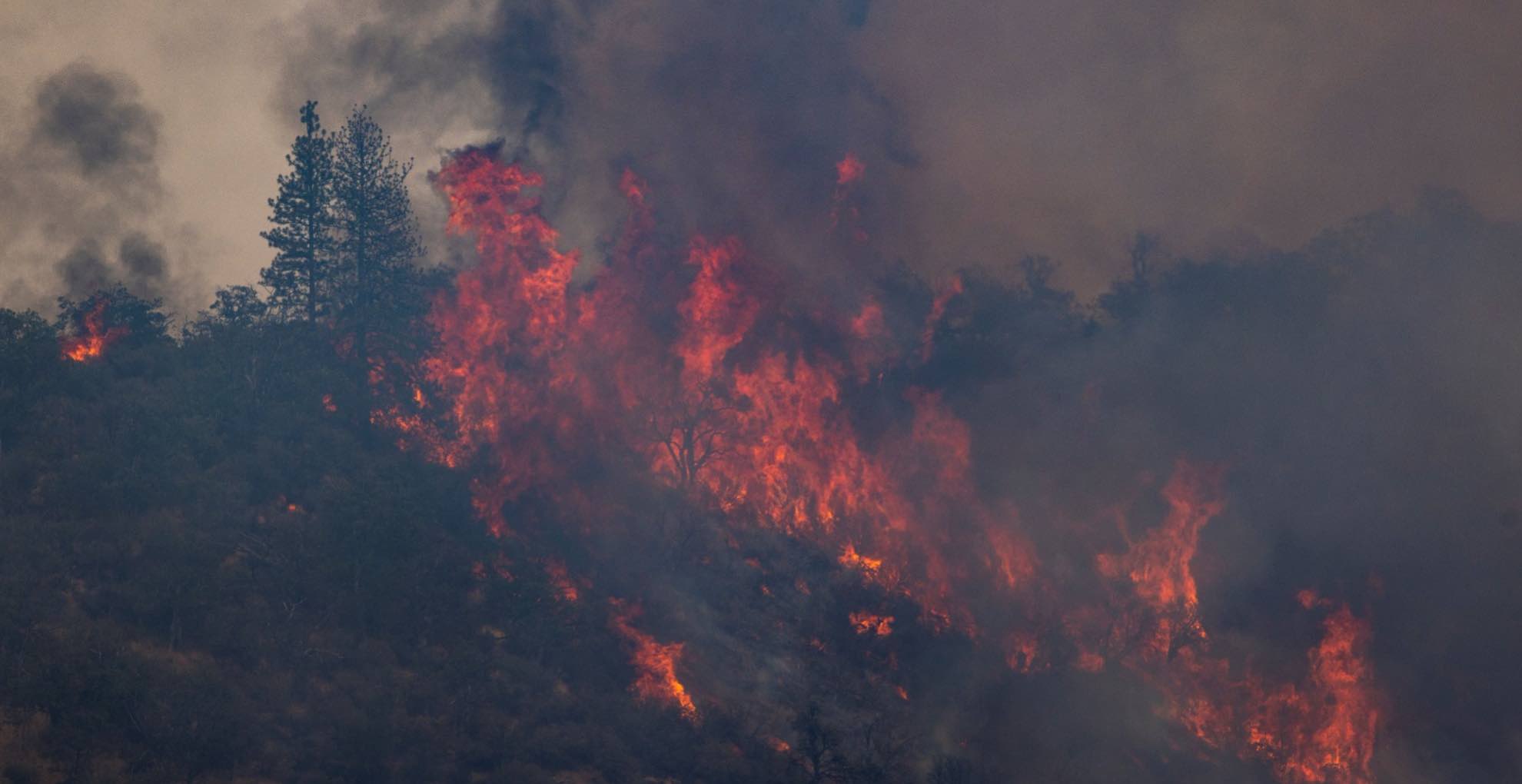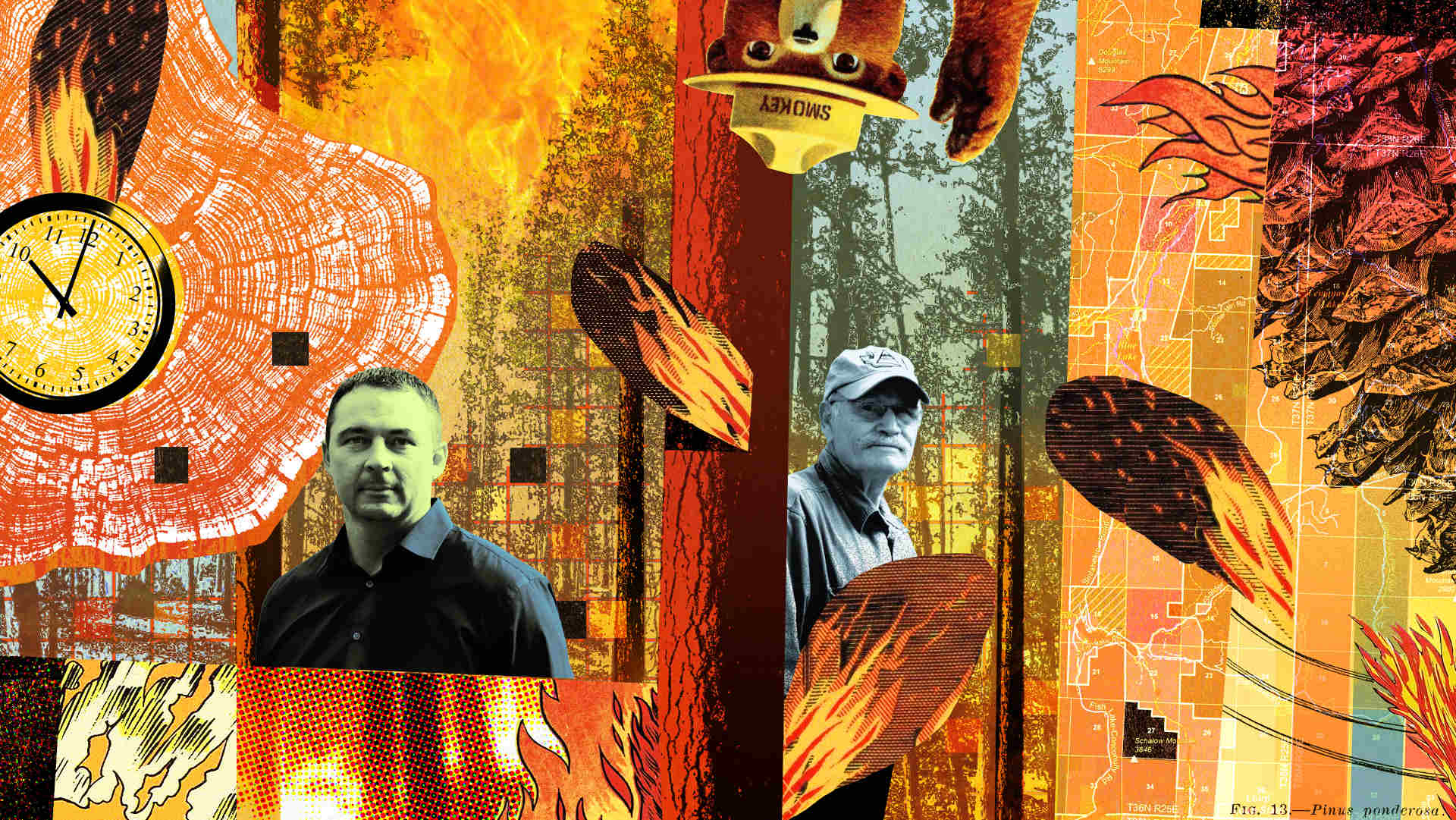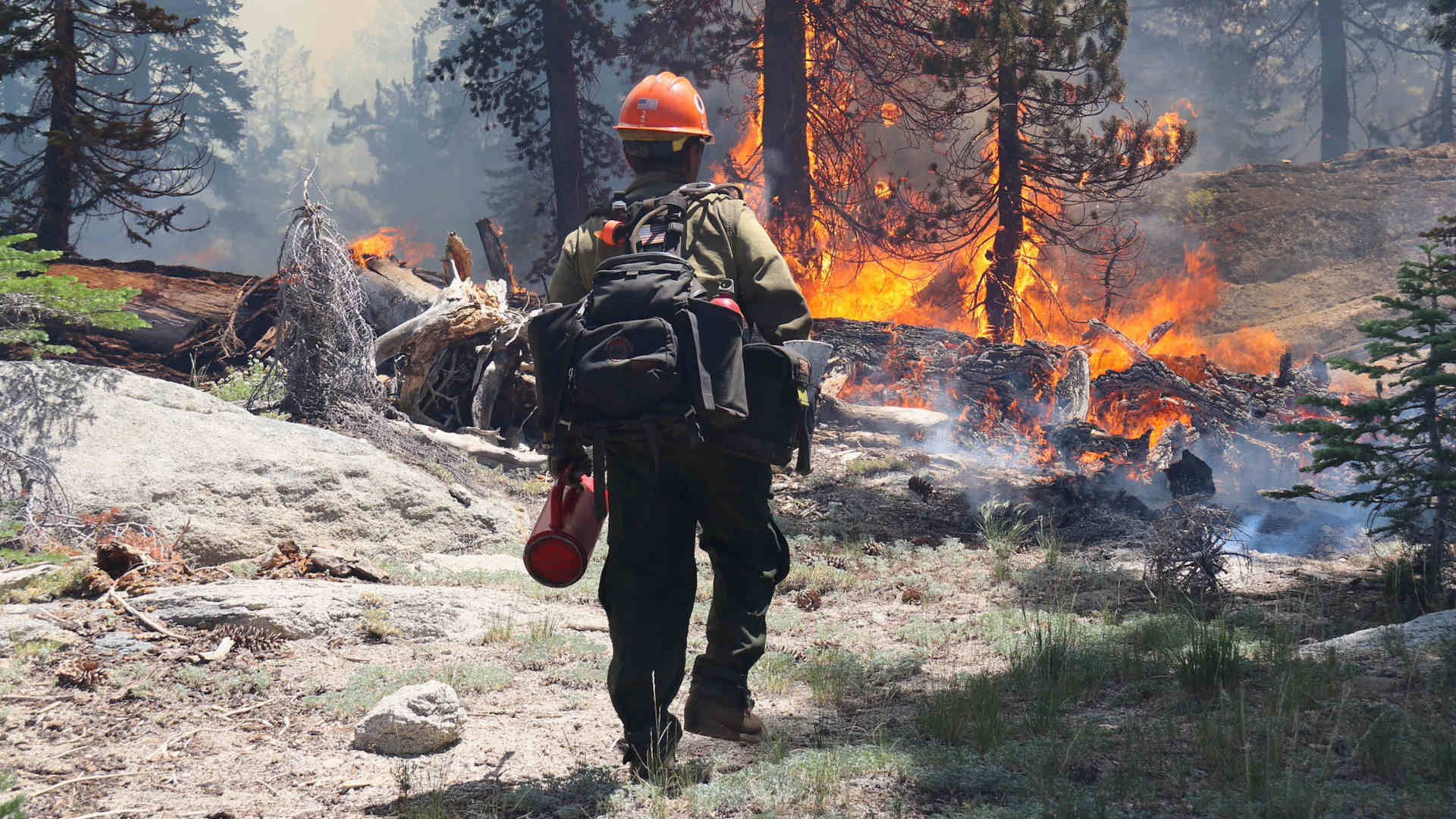In 1999, a crisis roiled Pacific Gas and Electric, one of California’s three major utility companies. An attempt to deregulate the company had backfired as predatory traders purposely manipulated the market for profit, causing prices to soar for consumers and the company to institute rolling blackouts across Northern California. At the conclusion of an unproductive meeting between the utility companies and the state’s political leaders, the Senate president threw a dollar bill in front of the state governor. “The buck, Governor,” the president said. “It stops with you.” The governor rejoined that the dollar bill had actually landed in front of the head of PG&E representative.
Who was responsible for PG&E’s failures? Who should be held accountable? These questions are a major theme in “California Burning: The Fall of Pacific Gas and Electric — and What it Means for America’s Power Grid,” by Wall Street Journal reporter Katherine Blunt. Blunt started at the WSJ three days before the start of the Camp Fire, the deadliest blaze in California history, and her reporting on the relationship between that fire and PG&E was a finalist for the 2020 Pulitzer Prize. (She notes in her afterward that no former chief executives from PG&E ever granted her an interview.)

BOOK REVIEW — “California Burning,” by Katherine Blunt (Portfolio; 368 pages).
Visual: Penguin Random House
“California Burning” is an expansion of that reportage, charting the history of PG&E from its Wild West-flavored early days through the stability of the mid-20th century, the turmoil of the late-20th century, and the malfeasance and climate-fueled disasters that have dogged it into the 21st. What emerges is a detail-dense account, but one that drills into increasingly urgent questions and implications. As of this writing, a new wildfire was just contained in Northern California, while earlier this month, an unprecedented heat wave caused PG&E to once again threaten rolling blackouts. And the relevance of this tale isn’t just confined to the West Coast — it should alarm anybody who’s ever turned on a light. As Blunt writes: “PG&E’s failure isn’t just a California story. It is, in many ways, a harbinger of challenges to come as climate change exacerbates the vulnerability of the grid, built decades ago to serve a different era of electricity demand.”
The first half of Blunt’s book traces the history of that grid. PG&E was one of many utility companies founded after the Gold Rush as California’s population exploded. After decades of competition, PG&E merged with a company called Great Western Power in 1930 and became a monopoly: prevailing wisdom at the time posited that it made little sense for utility companies to build redundant infrastructure. Instead, public good companies like PG&E shouldn’t have to deal with competition. A regulator would set fair prices and protect consumers from price swings.
This system worked — for a while. PG&E enjoyed a successful tenure in the boom years after World War II. During that time, they doubled their capacity to produce power as California flourished. But after a series of energy cost crises in the 1970s and 1980s, PG&E began the process of deregulation, setting out to compete on the market. The problem is that unlike most goods, electricity is difficult to supply in a competitive market. Produce too much electricity and transmission lines get congested; produce too little, and the grid goes down. Deregulation was a disaster, a “monster set loose,” Blunt writes, leading to soaring prices and rolling blackouts.
This crisis was not simply caused by negligence and poor planning, the author notes: It was fueled by predatory traders, most notably from Enron, who swooped in to manipulate the electricity market, inflate prices, and make a killing, in “arguably one of the most complicated heists ever undertaken in California,” Blunt writes.
PG&E filed for bankruptcy protection in 2001, emerging three years later into an era that promised what it called “business transformation,” where the company was supposed to blossom into a competitive force aggressively competing for market share. This process also ended in disaster — the company failed to balance the demands of its investors with the actual day-to-day responsibilities necessary to serve their customers.
Here, the visceral part of Blunt’s narrative begins. In 2010, in San Bruno, California, a gas line constructed in 1956 out of what Blunt calls a “hodgepodge” of leftover material exploded, spewing flames 60 feet into the air. PG&E faced criminal charges and a judge ordered the company put on a rehabilitation plan. PG&E stepped up its monitoring of its aging gas infrastructure, but decided there was no need to do the same for electricity.
This decision proved disastrous. For much of the past decade, drought has blanched an already-dry California; Blunt notes that the fire risk in PG&E’s territory has more than tripled from 15 percent in 2012. The company knew that these fires posed a risk: In 2011, a company-commissioned report showed that falling trees and branches near the company’s live wires had started 186 fires between 2007 and 2010. They tried to tackle the problem of trees growing around their aging powerlines, but it was too little, too late. PG&E had already cut back safety spending in the 2000s and 2010s, to free up more funds for capital investments and profit, and the state regulatory agency had focused on pushing PG&E towards renewable energy at the expense of safety monitoring.
Everything came to a head in the late 2010s with a series of blazes: the Northern California firestorm of late 2017 and the Camp Fire of 2018, which destroyed the town of Paradise. The Camp Fire was later shown to have been sparked by the PG&E-owned Caribou-Palermo transmission line, which fell after a hook purchased in 1919 for 56 cents snapped. Here, Blunt delves into the human cost of PG&E’s negligence: the homeless sheltering in tents in the ruins of Paradise, the fire survivor with vertigo and his son with panic attacks, the man on vacation in Hawaii who received a phone call from his daughter back in California warning that she might die. We also see the turmoil of shuttered schools, canceled surgeries, and spoiled groceries during the blackouts of 2019, where PG&E chose to shut off electricity to prevent more fires.
The power of these human stories exposes one of the book’s weaknesses: Some of the narrative is bogged down with detail, acronyms, and too many transient characters in the form of dry bureaucrats and CEOs. One wishes for more characters to linger and anchor the narrative, like Will Abrams, who survived the Tubbs Fire with his family and fought in the courtroom for PG&E’s accountability.
But still, the story is well worth reading for its larger morals. “California Burning” is a blueprint for all the ways investor-owned utilities can fail their customers: The outcome is dismal when the growing specter of climate change collides with negligence, greed, and market-driven interference. Blunt points out that utility companies across the West face the same threat of fire, while in the rest of the country climate change-fueled storms menace the grid — and in many of those places, companies must also sacrifice safety in the service of profit.
Anyone who’s seen a Hollywood movie would expect this story to have a happy ending — after all, “Erin Brockovich” is about a law clerk taking PG&E to task for contaminating groundwater. At first, in Blunt’s book, it seems like justice will be served. After the Camp Fire, PG&E pled guilty to involuntary manslaughter. The company didn’t simply neglect to maintain its infrastructure and to foresee the dangers of climate changed-fueled fires: They also willfully prioritized the needs of investors. From 2014 to 2017, the company’s equipment started 1,500 fires, more than a dozen of which were “catastrophic,” and led to 24 deaths. Meanwhile, investors made billions.
But what does it mean when a corporation is guilty of manslaughter? Not much. The book’s title is misleading: PG&E never really fell at all. PG&E was fined, but the truth is that you can’t easily dismantle a company that provides electricity to millions of people. Blunt does outline some potential ways forward for PG&E and other utility companies. For example, the co-op utility model, used in some small localities around the U.S., could solve the issue of utilities bowing to shareholder pressure for profit. And undergrounding, or putting wires underground, in California could solve the issue of trees felling lines and starting fires. In 2021, PG&E announced it would embark on an undergrounding project, which will cost an estimated $20 billion.
Perhaps the most chilling lesson of Blunt’s book is that some problems are so entrenched, so systemic, and have been neglected for so long that they seem almost impossible to solve. As the county deputy district attorney who successfully prosecuted PG&E said, “We made history,” he said, “but we didn’t change a fucking thing.”
Emily Cataneo is a writer and journalist from New England whose work has appeared in Slate, NPR, the Baffler, and Atlas Obscura, among other publications.












